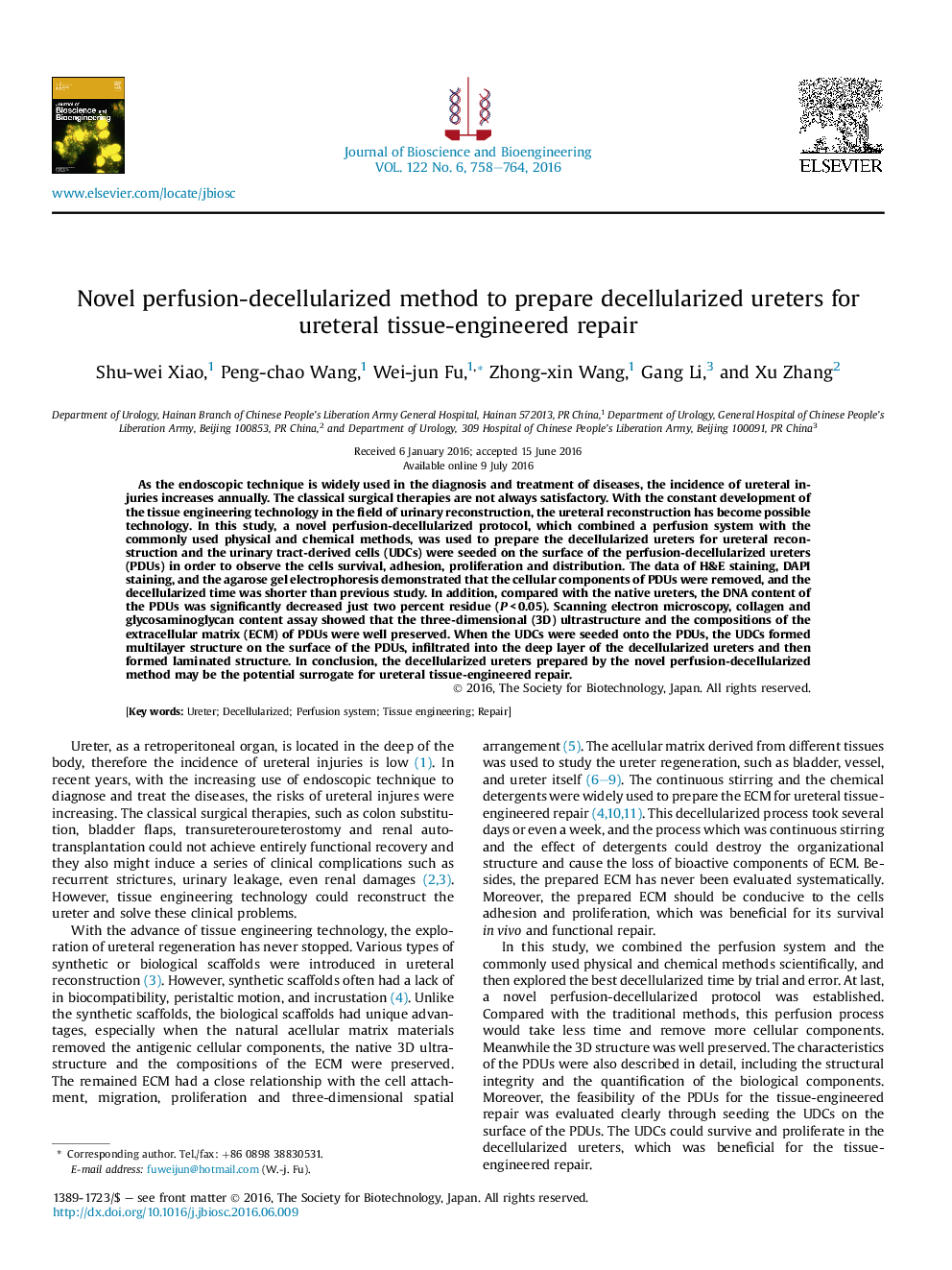| Article ID | Journal | Published Year | Pages | File Type |
|---|---|---|---|---|
| 4753482 | Journal of Bioscience and Bioengineering | 2016 | 7 Pages |
As the endoscopic technique is widely used in the diagnosis and treatment of diseases, the incidence of ureteral injuries increases annually. The classical surgical therapies are not always satisfactory. With the constant development of the tissue engineering technology in the field of urinary reconstruction, the ureteral reconstruction has become possible technology. In this study, a novel perfusion-decellularized protocol, which combined a perfusion system with the commonly used physical and chemical methods, was used to prepare the decellularized ureters for ureteral reconstruction and the urinary tract-derived cells (UDCs) were seeded on the surface of the perfusion-decellularized ureters (PDUs) in order to observe the cells survival, adhesion, proliferation and distribution. The data of H&E staining, DAPI staining, and the agarose gel electrophoresis demonstrated that the cellular components of PDUs were removed, and the decellularized time was shorter than previous study. In addition, compared with the native ureters, the DNA content of the PDUs was significantly decreased just two percent residue (PÂ <Â 0.05). Scanning electron microscopy, collagen and glycosaminoglycan content assay showed that the three-dimensional (3D) ultrastructure and the compositions of the extracellular matrix (ECM) of PDUs were well preserved. When the UDCs were seeded onto the PDUs, the UDCs formed multilayer structure on the surface of the PDUs, infiltrated into the deep layer of the decellularized ureters and then formed laminated structure. In conclusion, the decellularized ureters prepared by the novel perfusion-decellularized method may be the potential surrogate for ureteral tissue-engineered repair.
